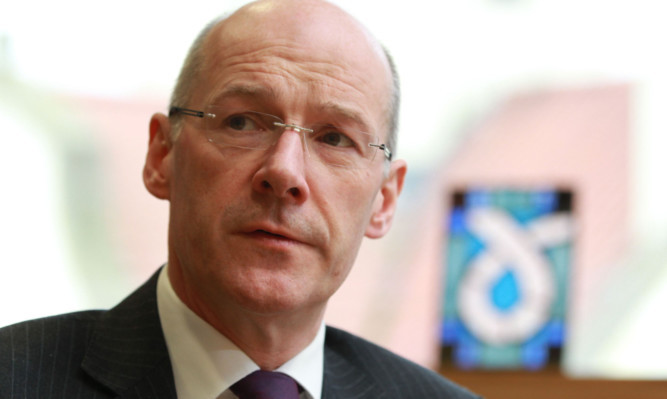
John Swinney is set to make a U-turn on his controversial stamp duty raid on middle class Scots moving home.
The Finance Secretary last night revealed he is to revise the new rates of stamp duty which will come into force in April when Holyrood takes control of the property tax.
Mr Swinney will announce his decision at Wednesday’s budget debate but it is understood the changes will be made around the plan to charge house buyers 10% of the purchase price above £250,000.
This move has proved controversial, not least because it will hit home buyers in expensive places to buy such as Aberdeen or Edinburgh.
And last month Chancellor George Osborne introduced reforms of the current UK-wide stamp duty which experts branded more progressive than the Scottish plans.
Mr Swinney said: At the time of my proposals designed for the Scottish market not London house prices 90% of homebuyers would have been better or no worse off, and 5,000 homes would be taken out of taxation all together, helping those at the lower end of the market.
“The Chancellor’s decision to introduce a new Stamp Duty system overnight, without warning and consultation, means that while 80% of homeowners continue to pay less tax or no tax at all under the Scottish system we now have the opportunity to review the rates.”
The new stamp duty rates being introduced in April mean nobody will pay tax on the first £135,000 of their house purchase. After this, 2% will be levied between £135,001 and £250,000.
As things stand there is then a big jump to 10% on any of the price between £250,001 and £1m.
The Scottish Conservatives have suggested that the proposed 10% levy on the purchase price above £250,000 should be halved to 5% up to £500,000, paid for by hiking the cost of purchases over £1m even more.
Last week a deal was struck between SNP minsters and the Treasury to reduce Scotland’s 2015/16 block grant by £494 million in return for the revenues from the devolution of stamp duty and the landfill tax.
This means the Scottish Government has £64m more than draft budget documents had predicted from this deal and Mr Swinney said this has opened the door for a review of the new stamp duty rates.
Scottish Conservative finance spokesman Gavin Brown said: ”The eye-watering 10% tax rate has caused concern in many parts of Scotland and is having a distortion on the housing market.
“There is a clear and obvious way to fix this distortion the Scottish Government can use the windfall from UK Stamp Duty changes to create more realistic tax rates with a shallower increase.”

Enjoy the convenience of having The Sunday Post delivered as a digital ePaper straight to your smartphone, tablet or computer.
Subscribe for only £5.49 a month and enjoy all the benefits of the printed paper as a digital replica.
Subscribe